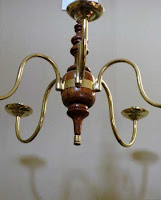Today, I drove to Birmingham and back to attend a funeral, the last person to die in the older generation in two families. I have posted before about the Hoods and the Chenoweths, two families as close as could be without shared blood.
At Independent Presbyterian Church, the three Chenoweth children, their spouses, one ex-spouse, three grandchildren, and relatives and friends gathered to celebrate the life of Barbara Derr Chenoweth, known as "Babs" to most and as "B" to her grandchildren.
Babs was generous and kind. Her smile defined the cliche: it lit up every room. She and her husband, Uncle Arthur, who preceded her in death by several years, made everyone welcome, comfortable, and safe.
 A 1970s Christmas photo shows Billy, my father, me, Babbie, Sandra in the front and David, Brenda, Wham, Uncle Arthur, Emily, Babs, Rhonda, Rhonda's father, and Chip in the back.
A 1970s Christmas photo shows Billy, my father, me, Babbie, Sandra in the front and David, Brenda, Wham, Uncle Arthur, Emily, Babs, Rhonda, Rhonda's father, and Chip in the back.
Today, at the funeral, when I saw my old friends, I cried. When I hugged their former next-door neighbor Virginia, whose parents were part of the circle of my parents' and the Chenoweths' friends, I cried again. Not for Babs, whose suffering ended on her youngest child's birthday, but for the passing of my childhood with the death of the last older member of that circle.
They were blessed, as are we to have known each other for so long.
 The nut shells in my yard prove the squirrels are having a good spring.
The nut shells in my yard prove the squirrels are having a good spring.


























































